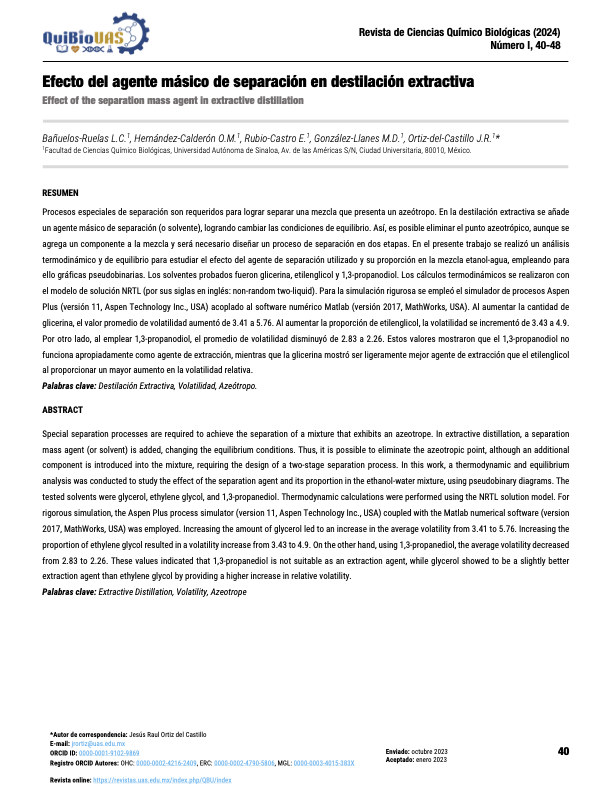Effect of the separation mass agent in extractive distillation
Keywords:
Extractive Distillation, Volatility, AzeotropeAbstract
Special separation processes are required to achieve the separation of a mixture that exhibits an azeotrope. In extractive distillation, a separation mass agent (or solvent) is added, changing the equilibrium conditions. Thus, it is possible to eliminate the azeotropic point, although an additional component is introduced into the mixture, requiring the design of a two-stage separation process. In this work, a thermodynamic and equilibrium analysis was conducted to study the effect of the separation agent and its proportion in the ethanol-water mixture, using pseudobinary diagrams. The tested solvents were glycerol, ethylene glycol, and 1,3-propanediol. Thermodynamic calculations were performed using the NRTL solution model. For rigorous simulation, the Aspen Plus process simulator (version 11, Aspen Technology Inc., USA) coupled with the Matlab numerical software (version 2017, MathWorks, USA) was employed. Increasing the amount of glycerol led to an increase in the average volatility from 3.41 to 5.76. Increasing the proportion of ethylene glycol resulted in a volatility increase from 3.43 to 4.9. On the other hand, using 1,3-propanediol, the average volatility decreased from 2.83 to 2.26. These values indicated that 1,3-propanediol is not suitable as an extraction agent, while glycerol showed to be a slightly better extraction agent than ethylene glycol by providing a higher increase in relative volatility
Downloads

Downloads
Published
Issue
Section
Categories
License
Copyright (c) 2024 Journal of Biological Chemical Sciences

This work is licensed under a Creative Commons Attribution-NoDerivatives 4.0 International License.

